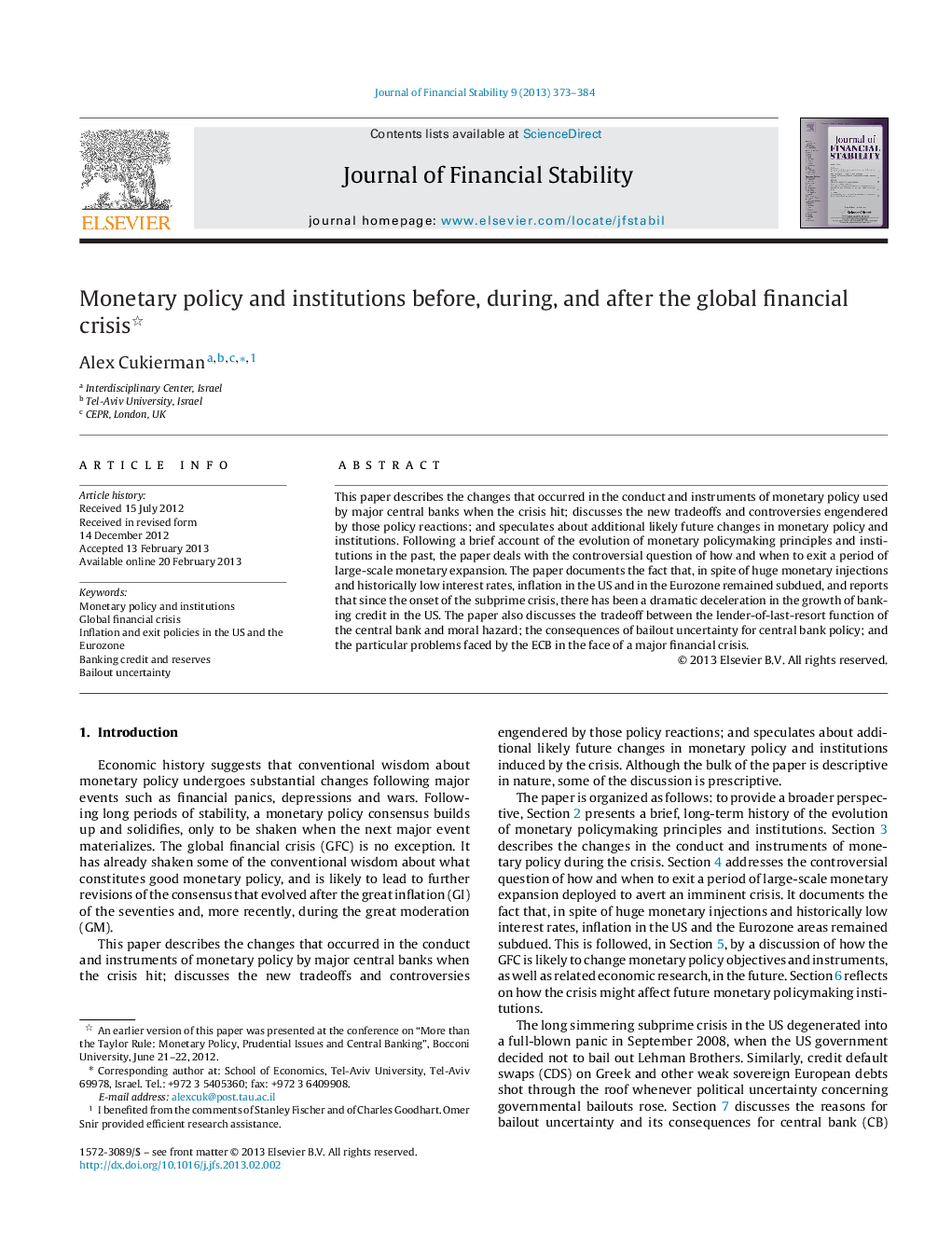| Article ID | Journal | Published Year | Pages | File Type |
|---|---|---|---|---|
| 998239 | Journal of Financial Stability | 2013 | 12 Pages |
This paper describes the changes that occurred in the conduct and instruments of monetary policy used by major central banks when the crisis hit; discusses the new tradeoffs and controversies engendered by those policy reactions; and speculates about additional likely future changes in monetary policy and institutions. Following a brief account of the evolution of monetary policymaking principles and institutions in the past, the paper deals with the controversial question of how and when to exit a period of large-scale monetary expansion. The paper documents the fact that, in spite of huge monetary injections and historically low interest rates, inflation in the US and in the Eurozone remained subdued, and reports that since the onset of the subprime crisis, there has been a dramatic deceleration in the growth of banking credit in the US. The paper also discusses the tradeoff between the lender-of-last-resort function of the central bank and moral hazard; the consequences of bailout uncertainty for central bank policy; and the particular problems faced by the ECB in the face of a major financial crisis.
